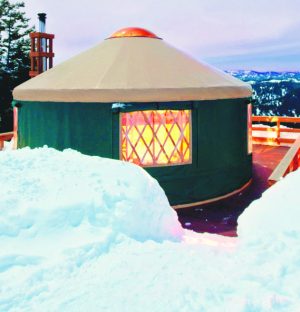November 18, 2010 – Compartment Syndrome has sidelined an increasing number of ski racers in recent years, but now there are new numbers showing just how many athletes are affected. A survey carried out over the past summer polled ski coaches across North America, asking them to submit details about their experiences with Chronic Exertional Compartment Syndrome (CECS) – to view the survey click here. The survey was initiated by Peter Hoenig, MD, David Brams, MD and James Stock, PhD in cooperation with the Cambridge Sports Union and they recently compiled and analyzed the data in the following report.
Chronic Exertional Compartment Syndrome (CECS) Survey Results
We have completed our on-line survey examining the prevalence of chronic exertional compartment syndrome (CECS) within the competitive Nordic ski community in North America. The purpose of the survey was to gauge the extent of CECS among xc skiers and to collect data that contributes to understanding the etiology of CECS.
A total of 50 coaches responded to the survey, representing ~1,500 Nordic skiers. The teams represented include youth and regional clubs, the US and Canadian National teams, and college and high school level teams. The geographic distribution of the responders was New England (35%), New York (5%), West (23%), Midwest (23%), Alaska (5%) and Canada (10%).
56% of the coaches reported skiers with CECS, diagnosed by performing compartment pressure testing. There were a total of 39 cases of CECS reported. No coach had more than three cases of CECS on their team that required medical intervention. 90% of the teams had only 1 case of CECS.
Of the 39 reported cases of CECS, 80% had surgery to correct the CECS, and >90% had full recovery post-surgery. There were three cases that required a second surgery.
The percentage of woman and men diagnosed with CECS was 57% and 43%, respectively. The age distribution for women diagnosed with CECS was 14 to 30, with the average age being 19. The age distribution for men diagnosed with CECS was 16 to 30, with the average age being 19.
62% of those with CECS had pain in the front of the leg, 24% had pain in the side, and 14% had pain in the back.
The teams that trained at >500 hours/year had a statistically significant (p value 0.06) higher prevalence of CECS, than the teams that trained < 500 hours/year. Those teams with a higher average vertical gain achieved during skate roller-ski workouts had a statistically significant (p value 0.04) increase in CECS. (The survey did not look at vertical gain during classic roller skiing.)
Few athletes were reported using the food supplement creatine. There was no correlation between CECS and the use of creatine in this study.
The study size did not allow us to find statistical relevance in correlating CECS with geography, stretching, off-snow training or body type.
In summary, there appears to be a high prevalence of CECS in male and female competitive cross-country skiers, particularly among the teams that train at high hours with increased vertical gain during skate roller skiing.
We hope that this small study encourages others to work toward understanding the etiology, prevention and treatment of CECS. We are encouraged by the many graduate students and researchers who contacted us and are initiating projects in this direction.
Peter Hoenig, MD
David Brams, MD
James Stock, PhD
Cambridge Sports Union
Address questions to: P.Hoenig, 1073 Concord Road, Sudbury, MA 01776. phoenig@massmed.org.






![National camp action [P]...](https://skitrax.com/wp-content/uploads/2019/08/Duluth-4-2019-08-08-at-10.46.51-AM-300x246.png)
![Matt Liebsch on the CXC Elite Team [P] CXC...](https://skitrax.com/wp-content/uploads/2019/08/Matt-Liebsch-CXC.2-525x700.4-300x267.jpg)
![Dan LaBlanc [P]...](https://skitrax.com/wp-content/uploads/2019/08/Dan-LaBlanc-img_1855.3.jpg)
